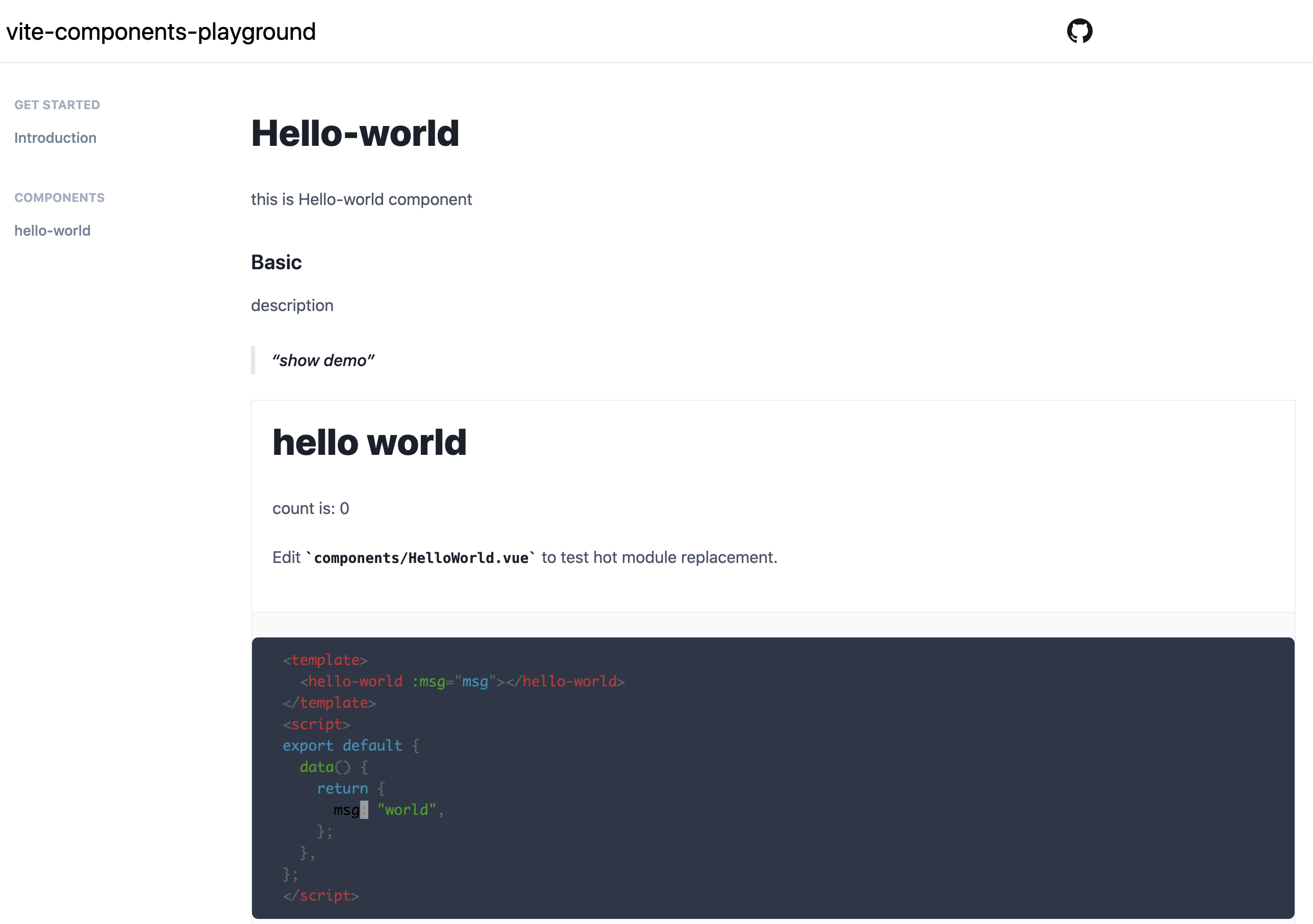tailwindcss 简介
# tailwindcss 简介
tailwindcss 简介
# 背景
最近处于 vue3 刚出来的风口,已经暂时不支持 ie11,最新的 vite 工具也已经开始用 native ES Module imports;而年底 ie11 也到了不支持的 browselist (opens new window) 的状态;那么未来引领 css 的框架应该是什么呢?
一个偶然的机会,我看到一个视频,说的是一个不同的 CSS 框架 Tailwind.css,它让一切都变得更美好。也许是时候去试试了。
其实我在做 ui 库升级到 vue3 的时候准备替换成 lerna,但其中一个皮肤一时想不到如何解藕。
# 从一个 demo 开始了解如何使用 tailwindcss
简单开发一个模块

html/css 实现
<div class="chat-notification">
<div class="chat-notification-logo-wrapper">
<img
class="chat-notification-logo"
src="/img/logo.svg"
alt="ChitChat Logo"
/>
</div>
<div class="chat-notification-content">
<h4 class="chat-notification-title">ChitChat</h4>
<p class="chat-notification-message">You have a new message!</p>
</div>
</div>
<style>
.chat-notification {
display: flex;
max-width: 24rem;
margin: 0 auto;
padding: 1.5rem;
border-radius: 0.5rem;
background-color: #fff;
box-shadow: 0 20px 25px -5px rgba(0, 0, 0, 0.1), 0 10px 10px -5px rgba(0, 0, 0, 0.04);
}
.chat-notification-logo-wrapper {
flex-shrink: 0;
}
.chat-notification-logo {
height: 3rem;
width: 3rem;
}
.chat-notification-content {
margin-left: 1.5rem;
padding-top: 0.25rem;
}
.chat-notification-title {
color: #1a202c;
font-size: 1.25rem;
line-height: 1.25;
}
.chat-notification-message {
color: #718096;
font-size: 1rem;
line-height: 1.5;
}
</style>
用 tailwindcss 实现,首先引入 tailwindcss
@tailwind base;
@tailwind components;
@tailwind utilities;
并修改样式代码
<div class="max-w-sm mx-auto flex p-6 bg-white rounded-lg shadow-xl">
<div class="flex-shrink-0">
<img class="h-12 w-12" src="/img/logo.svg" alt="ChitChat Logo" />
</div>
<div class="ml-6 pt-1">
<h4 class="text-xl text-gray-900 leading-tight">ChitChat</h4>
<p class="text-base text-gray-600 leading-normal">
You have a new message!
</p>
</div>
</div>
冗长的代码瞬间变得精简了起来
# 核心理念
# 功能类(utility-first)
功能类优先是 tailwind 最重要的设计理念,上面的例子,我们做的时候我们需要一遍一遍的定义自己的 css classes 名称,甚至起名也会是个艰苦的事情,如果文件过大还需要移动到对应的文件夹,单独形成变量。
以前其实有项目我会定义比如 align-content: center ,为 .center,但别的项目可能定义为 .text-center
这个就是功能类最大的好处:
- 你不是在浪费精力去 classes 名称.
- 你的 CSS 文件停止增长
- 全局修改变得更加容易
对应 tailwind 的配置是 @tailwind utilities;
顺便提下这里
@tailwind base其实就是 normalize.css (opens new window),以及一些其他的默认配置 (opens new window),而@tailwind component是 tailwind 组件,我理解应该是空的(未考证)
# 响应式设计
利用断点语法实现 @media 功能,这个操作简直逆天,以前写法都要写很多的 @media 样式,现在完全是加个前缀就可以搞定了
<!-- 默认长度是16, medium screens 是32,large screens 是48 -->
<img class="w-16 md:w-32 lg:w-48" src="..." />
w-16 对应的是 width: 4rem; 32 对应的是 8rem...
而响应式前缀可以默认可以和大部分功能类一起使用
# 伪类
支持伪类的前缀标签,以及可以和响应式一起使用
<button
class="bg-orange-500 hover:bg-orange-600 sm:bg-green-500 sm:hover:bg-green-600"
>
Hover me
</button>
# 自定义样式
由于 tailwind 的是低层次框架,现有的 tailwindcss 默认的 utility,base,component 不足以满足所有的场景;
而使用 @layer 指令,Tailwind 将自动将这些样式移动到 @tailwind base, @tailwind utility,@tailwind component 的位置
比如我们要做一个按钮组件,提炼对应的样式:
@layer components {
.btn-blue {
@apply bg-blue-500 text-white font-bold py-2 px-4 rounded;
}
.btn-blue:hover {
@apply bg-blue-700;
}
}
# Tailwind 语法糖
先写个简单的例子:
@tailwind base;
@tailwind components;
@tailwind utilities;
@layer base {
h1 {
@apply text-2xl;
}
}
@layer components {
.btn {
@apply bg-gray-500 text-white font-bold;
@apply py-2 px-4 rounded;
font-family: Georgia, Cambria, "Times New Roman", Times, serif;
background-color: theme("colors.blue-500");
}
}
@layer utilities {
@variants hover, focus {
.filter-none {
filter: none;
}
}
@responsive {
.bg-opacity-none {
@apply opacity-0;
}
}
}
- @tailwind:使用 @Tailwind 指令将 Tailwind 的 base, components, utilities 插入到 CSS 中。
- @apply:使用 @apply 将任何样式内联到您自己的自定义 CSS 中。
- @layer:使用 @layer 指令告诉 Tailwind 属于一组自定义样式的 “块”。在 base, components, utilities 有效。
- @variants:您可以通过在 @variant 指令中包装它们的定义来生成响应式、hover, focus, active 和其他伪类。
- @responsive:通过将 class 的定义包装在 @responsive 指令中,您可以生成自己 class 的响应式。
- theme():使用 theme() 函数和 . 访问你的 Tailwind 配置值。
# 其他优势
# 按需配置打包
全量的 tailwindcss2.0 的包是 3020.7kB,1.8 是 2413.4KB;但如果你没用到的 tailwindcss 样式,是不是压缩大你的文件中去的, Tailwind 的 purge (opens new window) 选项来进行 tree-shake 来减少你最终构建项目的大小;
PurgeCSS 会查找 HTML 中的 classes。它不会尝试解析你的 HTML,寻找类属性或者动态执行你的 JavaScript,它只是在整个文件中寻找任何与这个正则表达式匹配的字符串;
/[^<>"'`\s]\*[^<>"'`\s:]/g`
不要使用 btn-{type} 这样的样式来定义样式,避免出现样式丢失情况
扫描文件也可以配置
// tailwind.config.js
module.exports = {
purge: ["./src/**/*.html", "./src/**/*.vue", "./src/**/*.jsx"],
};
# 自定义配置
想要自定义配置,需要先了解tailwindcss 的默认配置 (opens new window)
在 tailwind.config.js 中可以扩展自己的自定义配置项
比如如下配置:
// tailwind.config.js
module.exports = {
theme: {
screens: {
sm: "640px",
md: "768px",
lg: "1024px",
xl: "1280px",
},
fontFamily: {
display: ["Gilroy", "sans-serif"],
body: ["Graphik", "sans-serif"],
},
borderWidth: {
default: "1px",
"0": "0",
"2": "2px",
"4": "4px",
},
extend: {
colors: {
cyan: "#9cdbff",
},
spacing: {
"96": "24rem",
"128": "32rem",
},
},
},
};
# 自定义插件
这个我觉得是我引入它到组件库的一个重要的原因,虽然我们自己有过类似的方案;但结果还是把组件的样式文件从组件库中捞出来,然后放到项目中,并实用其中的样式变量。最终还是引入到 main.js中,感觉实现并不是特别美观。还有一点就是,颜色变量非常多,非常不容易理解,而且大部分都不是用户希望改的,很多时候只需要修改主题色就好了。
但其实不管放到哪个 js 或者 css 文件,或者是 vue.config.js 中都不是非常解藕的方案,从我们公司的脚手架出发其实就是将 vue.config.js 中的颜色变量提取到,tailwind.config.js 中。
所以我希望的我们作出的通用的样式可以提炼出插件,我将这个想法提交到:vite-components-playgrount commit (opens new window)
这里并不是传统意义的 css-in-js,更多的是 css-in-conifg。在设计上有更多的约束。
# Tailwindcss 缺点
如果你熟悉 css,那么你一开始实用默认的 tailwindcss 样式需要大量的查找官网 api 去对应,比如:
- 默认实用 rem,那么如果用 px 的需要考虑被 16 整除的问题
opacity:0;对应opacity-0,opacity:1;对应opacity:100;width和height对应的是w,h可以理解,line-height对应的是leading-font-size: 1.5rem;对应的是text-2xl,怎么看 1.5 也不能被 2 整除- 编写插件也要记住默认配置,否则需要自己去找。
- 找不到一些不是很主流的样式比如
translateZ

我魔改过 impress (opens new window) 的项目,很多样式没办法修改(虽然也有一大部分可以调整),同时也做过 admin-template 的项目,也感受到如果所有像素都做到整改,也是需要加入大量的自定义样式。
vscode 自带很多插件,有输入提示功能
当然最痛苦的还是每个样式要去官网找一遍 api,需要遇到和尤大类似的问题,如何评价 Vue 的 ref 语法糖提案? (opens new window);
# 周边
- tailwindplay (opens new window):在线编辑器
- tailblocks (opens new window):内涵大量模版
- vue-tailwind (opens new window):一个 vue tailwind 组件库
- nuxt (opens new window):nuxt 文档官网最新版采用 tailwind 布局
官方的很多模版都要收费
其他模版和组件库可以查看awesome-tailwindcss (opens new window)
学习 tailwindcss 可以查看我翻译的 tailwind-learning (opens new window),基本是官网的翻译(现在还是 1.x 的,后续会改成 2.x 的)。以及我自己做的 template 项目 elementui-tailwind-admin-template (opens new window)
# 反思
其实最早从 甚至现在的 js -> ts,option Api -> compsition Api,文档由纯撸,再引入 markdown-loader,其实语言的转化更多的并不是先驱者强行加入的,而是给我们带来的一种约束,从代码层面去约束使用者本身。我们所说的约定大约配置,的约定更多的是一种束缚。

喜欢是放肆,爱是克制
来看一下 tailwindcss 一开始的设计理念,tailwindcss maintainer 的一篇最早 tailwindcss 的设计理念 (opens new window)
实际工作中,面临的两难境地:
- HTML 是独立的,CSS 依赖 HTML,css 语义化:类似
btn btn-primary,但会出现提前优化,一个组件做得越多,或者一个组件越具体,越难以复用。 - CSS 是独立的,HTML 依赖 CSS,CSS 可以方便地复用,HTML 不能方便地调整样式:类似
text2xl。
作者的选择:内容中立组件 + 功能类(utility classes),并且功能类优先。
核心代码:
@tailwind components;
@tailwind utilities;
# 提炼思路
如果是组件,那基础组件的样式,比如主题色,基础色值,可以引入到功能类中,而组件样式可以加入到内容组件中去。
如果是项目,那么一般只需要关注功能类,提取主题色,基础色值,引入到功能类中。
这里有个原则直到一个样式出现 3 次的时候,再考虑抽象成组件或功能类,而非像 BEM 等方法论所做的那样,一开始就提取样式。
提取的内容可以利用插件的方式供三方使用,而不是从库中捞取对应的样式变量文件,这从某种程度也是一种开发约束的方式。
# Tailwind css 2.0
1.0 之后的 18 个月,tailwind css 2.0 在 2020 年 11 月 18 日发布了,以下是更新热点:
- 全新的调色板,比 1 多了 1 倍多以上的色值选择
- 支持暗色模式,这里不是指的换肤,而是支持 prefers-color-scheme (opens new window)
- 响应式增加
2xl, 最小支持宽度为1536px - 友好的 form 样式插件tailwindcss-forms (opens new window)
- 为每个
font-size提供对应的line-heights配置 - 扩充了 间距,文字大小,透明度 等一些功能类的默认样式范围
@apply用在所有语法上,比如类似使用@apply hover:bg-black的语法- 可以默认配置
transition的动画时间或者效果
值得一提的是 tailwindcss 2.0 采用的是 PostCss8,如果老的用户需要查看升级文档 (opens new window)
vite 我看了下是支持的,但 vue-cli,暂时还未加入 PostCss8,需要等到 vue-cli5: Plan for Vue CLI v5 (opens new window)
更多 tailwindcss2 内容可以参考 tailwindcss-v2 (opens new window)
# 总结
tailwindcss 是一个低 level, 可定制化的 CSS 框架;它的最大特点是功能类(utility classes)优先。同时它有着强大的文档,插件和生态系统。基于 tailwindcss 的能力与约束,你可以开发出自己的组件或者页面样式。
tailwind 2.0 已正式发布,快来使用吧。

